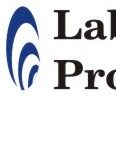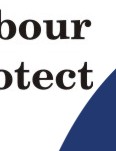 |
 |
 |
 |
 |
|
 |
 |
 |
 |
 |
|
 |
 |
 |
 |
 |
|
 |
 |
 |
 |
 |
|
 |
 |
 |
 |
 |
|
THE RULES
CONCERNING LEAVE 1.
Annual Leave: Employees who work for 24 hours or more a
month for the same employer may take annual leave. The employer
and employee should agree about when the leave is to be taken. If
there is no agreement the employer should decide. Employees have a
right to unpaid leave and must apply in writing. Annual leave may
not be taken during a sick leave period or notice period. An
employee may not work during leave or be paid instead of leave except
when leaving the job. Payment: An employee must be paid in full during
leave. Leave pay should be paid before the leave starts or on
employee’s normal payday, if so agreed. If an employee leaves the
job he/she must be paid for any leave accrued but not taken at a rate of
one day’s pay for every 17 days worked. How many
days does an employee get: An employee must have at least 21 leave
days a year starting from the date of employment, or one day’s leave for
every 17 days worked, or one hour for every 17 hours worked.
Public holidays are not counted as leave. If an employee has any
leave days left, he/she may take that leave within six months of the
next year of employment with the same employer. 2.
Sick Leave: Sick leave works in a three-year cycle.
An employee may take one day’s sick leave for every 26 days worked
during the first six months of employment and thereafter an employee may
take the number of days he/she normally works in six weeks during every
three year cycle. An employee may be requested to produce a
valid medical certificate if he/she has been absent from work for more
than two days in a row or more than twice in eight weeks. If the
employee does not have a valid medical certificate, the employer does
not have to pay the employee. The medical certificate must be
issued and signed by a medical practitioner or any other person who is
certified to diagnose and treat patients and who is registered with a
professional council established by an Act of Parliament. Medical Certificates and Sick Notes Although this is not cover in the Labour Legislation, the Ethical and Professional Rules of the Medical and Dental Professions Board of the Health Professions Council of South Africa provides the following instructions on the issuing of medical certificates or sick notes: Rule 15.(1) A practitioner shall only grant a certificate of illness if such certificate contains the following information, namely:
(2) If preprinted stationery is used, a practitioner shall delete words which are irrelevant. (3) a practitioner shall issue a brief factual report to a patient where such a patient requires information concerning himself or herself.
3.
Maternity Leave: An employee may take at least four months
unpaid maternity leave. This leave may start at any time from four
weeks before the expected date of birth or when a doctor or midwife
certifies that leave is necessary for the health of mother or the child.
An employee must notify the employer in writing (if she can write), of
the date on which she wants to start maternity leave. An employee must not work for six weeks
after delivery, unless a doctor or midwife certifies that she is fit to
do so. An employee who has a miscarriage during the last three
months of pregnancy or who bears a stillborn child, is also entitled to
six weeks maternity leave, whether or not the employee has started
maternity leave at the time. No employer may require or permit a pregnant employee or an employee who is nursing her child to perform work that is hazardous to her health or the health of her child. Female employees may apply for UIF from the Department of Labour in cases of unpaid maternity leave. 4. Family Responsibility Leave: An employee who has been with an employer
for longer than four months and who works for at least four days a week
for the same employer may take three days paid family responsibility
leave during each year of employment. The reason for this leave is
to attend to the following family issues;
An employer may require reasonable proof of an event contemplated in this section for which leave is required. Family responsibility leave may form part of the employee's annual leave where an employer employs less than 10 permanent workers. Information provided herein is based on documentation from the CCMA and available from their website >> Labour Law >> useful links >> UIF payments >> UIF benefits |
|
|National Assistance: 0860 LABOUR/ 0860 522687
|
||||
| To join... | ||||
| (the Membership Fee is only R85pm): | ||||
|
||||